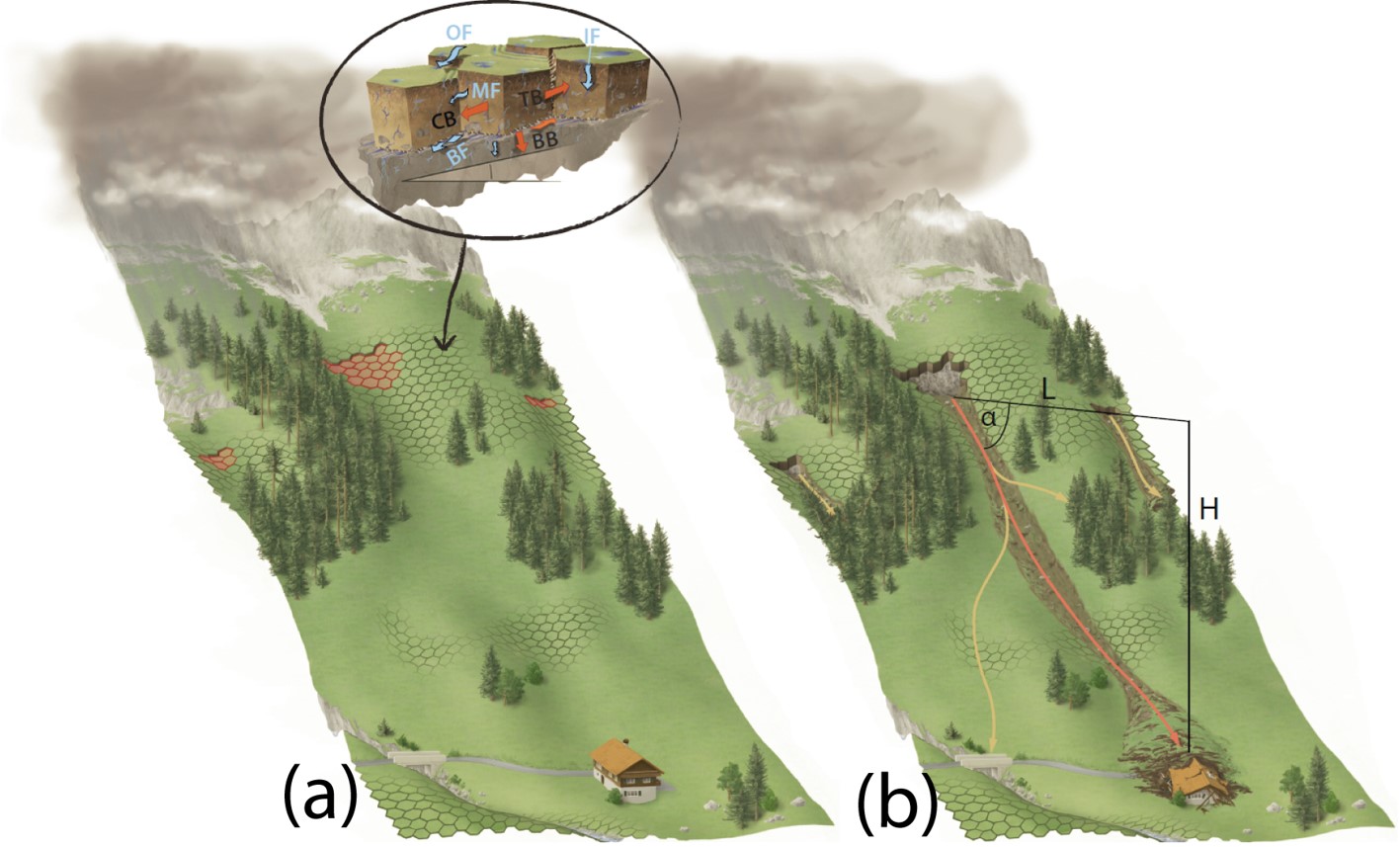Model description
General Information
The model STEP-TRAMM was developed to simulate the triggering of shallow landslides. As main difference to other models it incorporates progression of local failures in a chain reaction culminating into hazardous mass release. As model results time series of mass release are computed and maps of landslides and damage are provided.
The model computes localized landslides that can be linked as well to predictions of debris flow runout as shown in the figure below. For more information read the references.

Concept of linking landslide triggering model with debris flow runout and pathway predictions. (a) A discretized hillslope in a catchment with locations of rainfall-induced landslides (brown hexagons) computed using the STEP-TRAMM model (von Ruette et al., 2013). (b) The released mass (brown hexagons in (a)) is then routed by a debris flow model along the irregular surface topography with different potential runout paths (shown in red and yellow), characterized by horizontal runout distance L and elevation difference H, defining the reach angle alpha.
The model computes the hydro-mechanical response of a catchment (a few square kilometers in size) to an intense rainfall event (of several hours or days).